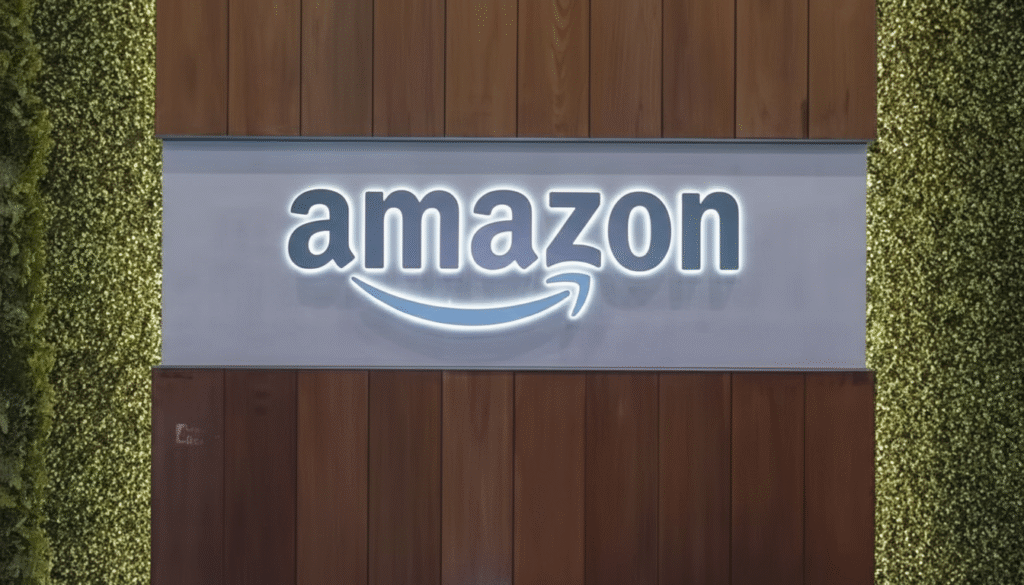In a significant restructuring move, Amazon.com Inc. has confirmed plans to cut around 14,000 corporate jobs, representing nearly 4% of its white-collar workforce. The announcement comes as the company accelerates its adoption of artificial intelligence (AI) across multiple divisions.

The confirmation followed months of speculation after CEO Andy Jassy suggested earlier this year that AI integration would inevitably reshape Amazon’s workforce. The company’s leadership now says the cuts are aimed at streamlining operations and reducing layers of bureaucracy.
AI at the Core of Amazon’s Strategy
Beth Galetti, Amazon’s Senior Vice President of People Experience and Technology, said in a company blog post that the layoffs are part of an ongoing effort to “get even stronger by reducing bureaucracy, removing layers, and shifting resources” toward high-priority projects.
She added, “Some may ask why we’re reducing roles when the company is performing well. The world is changing fast. This generation of AI is the most transformative technology since the Internet — enabling companies to innovate much faster than ever before.”
Amazon’s renewed focus on AI comes as the company seeks to automate more tasks that were traditionally handled by human employees — from logistics management to data operations and customer experience.
Departments and Roles Affected
According to reports from Bloomberg, the job cuts are impacting a broad range of departments, including:
- Logistics and Operations
- Payments and Financial Services
- Video Games Division
- Amazon Web Services (AWS), the company’s cloud computing arm
The restructuring also includes reductions at the management level, a key priority for Jassy, who has repeatedly emphasized the need to simplify decision-making within the organization.
More Layoffs Expected in 2026
Galetti also hinted that this may not be the end of workforce reductions. While Amazon expects to continue hiring in “key strategic areas” in 2026, it will also look for more opportunities to remove redundancies and improve operational efficiency.
Her comments suggest that Amazon is planning a longer-term transition — balancing cost-cutting with investment in AI, automation, and cloud infrastructure.
Employee Reactions and Uncertainty
Following the announcement, Amazon employees reportedly gathered in online chat groups to discuss which departments were affected and what the next steps might be. Many sought advice on backing up personal data and identifying companies currently hiring.
The mood across internal forums appeared tense, with employees sharing mixed feelings — acknowledging AI’s potential while expressing concern over job security and workplace morale.
A History of Gradual Layoffs
This is not the first large-scale layoff for the e-commerce giant. Between late 2022 and early 2023, Amazon cut more than 27,000 corporate positions as part of a cost-cutting initiative following a pandemic-driven hiring boom.
As of June 2025, Amazon employed about 1.55 million people globally, with nearly 350,000 corporate employees. The current round of 14,000 job cuts marks one of its largest workforce reductions since that period.
The Bigger Picture: AI Reshaping Tech Jobs
Amazon’s move reflects a wider industry trend as major tech firms — including Microsoft, Meta, and Google — restructure their organizations to embrace AI-driven efficiency. Analysts predict that AI integration will continue to displace certain roles while creating new ones in emerging areas like machine learning operations, cloud AI services, and automation systems.
For Amazon, the challenge lies in balancing innovation with responsibility — ensuring that AI adoption strengthens the company’s long-term competitiveness without eroding employee trust.
Amazon’s decision to trim 14,000 jobs underscores how deeply AI is transforming the modern workplace. While the company insists the cuts are meant to streamline operations and invest in “biggest bets,” the coming months will reveal whether this shift leads to greater efficiency — or sparks further uncertainty among its global workforce.
